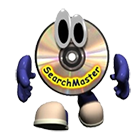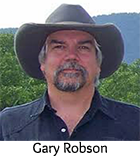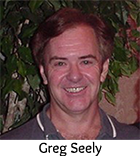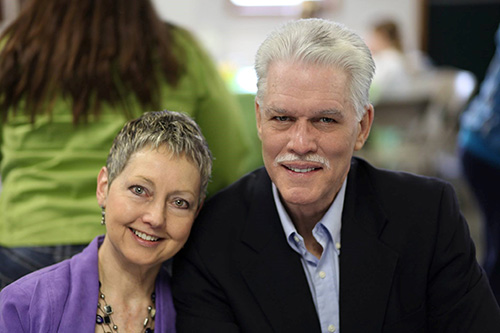About SearchMaster
 SearchMaster was launched in 1998 when Jim Barker received from one of his reporting clients what he now refers to as “The Transcript from Hell,” a 120-page deposition of a brain surgeon whose answers to the questions asked of him included the names of colleges and medical schools in the United Kingdom and the United States, obscure drug names, the names of medical tests, diseases, syndromes, medical equipment, hospitals and clinics in the United States where he had practiced, the names of U.S. doctors with whom he had been associated in some fashion, etc. It took Jim, who typically proofed 40 to 50 pages per hour, a full 8-hour workday to complete the proofing of that transcript. Why? Because he had to spend a huge amount of time pulling out his reference books and looking up the spellings of all the people, places, things, and terminology that the doctor referred to in the course of his deposition. And to make matters worse, this particular reporter, who was Jim’s main client at the time and who provided at least 75% of his income, was planning on specializing in medical depos in the future, which meant that more transcripts from hell would be forthcoming!
SearchMaster was launched in 1998 when Jim Barker received from one of his reporting clients what he now refers to as “The Transcript from Hell,” a 120-page deposition of a brain surgeon whose answers to the questions asked of him included the names of colleges and medical schools in the United Kingdom and the United States, obscure drug names, the names of medical tests, diseases, syndromes, medical equipment, hospitals and clinics in the United States where he had practiced, the names of U.S. doctors with whom he had been associated in some fashion, etc. It took Jim, who typically proofed 40 to 50 pages per hour, a full 8-hour workday to complete the proofing of that transcript. Why? Because he had to spend a huge amount of time pulling out his reference books and looking up the spellings of all the people, places, things, and terminology that the doctor referred to in the course of his deposition. And to make matters worse, this particular reporter, who was Jim’s main client at the time and who provided at least 75% of his income, was planning on specializing in medical depos in the future, which meant that more transcripts from hell would be forthcoming!“Well,” Jim decided, “if I’m going to be doing lots of very technical medical proofreading in the future, I need to find a way to look up all this stuff a lot faster so I can turn a sufficient number of pages per hour in order to make a decent living.” And with that, Jim and his son began the monumentally tedious, time-consuming job of developing a master file of medical terminology (in Microsoft Word format) a task that took, at the outset, over a year, and which continues to this day.
“Uh-oh,” said Jim. “I now have a huge MS Word file that contains 50,000 references to medical terminology [in 2013, the number of medical references has increased to nearly 300,000], but it’s not wildcard-searchable, and there was no way, in MS Word format, to make it wildcard-searchable. Without wildcard-searchability, Jim’s new medical glossary would require that folks either knew how to spell what they were looking for or they would have to scroll through the file until they found the reference they were seeking. Not good. Not much better than the status quo ante, actually.
 Not being a software programmer himself, Jim was stumped – until he got a call from Gary Robson, then CEO of Cheetah, a software company that developed and marketed a CATware product known as TurboCAT. Gary had heard through the grapevine what Jim was up to and he called Jim and said that, if Jim would send him his medical glossary, he would send Jim a surprise in return. And, boy, did he! What Jim received that day, attached to an email, was a small executable file. Gary told Jim to place that file into the same folder as the medical glossary and then run the executable file. Jim did. Bingo! For the first time in the history of court reporting, there was a way to look up medical references, using wildcards, and get the results in two seconds flat! It was agreed that Gary would take on the task of developing the software now known as SearchMaster (then known as the K-Files). As it turned out, though, Gary’s professional life was about to take a major turn, and he informed Jim that he would not be able to continue providing his programming assistance and that Jim would have to find someone else to write the code for SearchMaster. (Thank you, Gary Robson, for being there at the very beginning.)
Not being a software programmer himself, Jim was stumped – until he got a call from Gary Robson, then CEO of Cheetah, a software company that developed and marketed a CATware product known as TurboCAT. Gary had heard through the grapevine what Jim was up to and he called Jim and said that, if Jim would send him his medical glossary, he would send Jim a surprise in return. And, boy, did he! What Jim received that day, attached to an email, was a small executable file. Gary told Jim to place that file into the same folder as the medical glossary and then run the executable file. Jim did. Bingo! For the first time in the history of court reporting, there was a way to look up medical references, using wildcards, and get the results in two seconds flat! It was agreed that Gary would take on the task of developing the software now known as SearchMaster (then known as the K-Files). As it turned out, though, Gary’s professional life was about to take a major turn, and he informed Jim that he would not be able to continue providing his programming assistance and that Jim would have to find someone else to write the code for SearchMaster. (Thank you, Gary Robson, for being there at the very beginning.)Enter Thomas Fryar, a software programmer who at that time worked for Advantage Software, developer of the Eclipse CATware program, which, it so happens, was the software that Jim was using to scope and proofread transcripts (Version 7.2 DOS). Jim and Tom met in Orlando, Florida, and after Jim explained what he wanted to do, Tom agreed to become the programmer for the fledgling SearchMaster. Tom is still the programmer of SearchMaster, which is to say that Jim informs Tom, “Here is what I want this new feature in SearchMaster to do,” and Tom writes the code to make it happen. Jim’s ideas, Tom’s programming, and there you have it: SearchMaster.
So Jim had a wonderful medical glossary and had developed other glossaries, starting with all the cities in the United States, their ZIP codes and their Area Codes; then he added colleges of the world and a few other glossaries. There remained one problem, though: Jim didn’t have the financial resources needed in order to market his new software.
 Enter Greg Seely, CEO of Advantage Software, who heard of Jim’s plight, that being that Jim had developed something truly extraordinary and unique, but unless it was advertised to the reporting community, it wasn’t going anywhere. Suffice it to say that Greg Seely made it possible for Jim to advertise SearchMaster in The Journal of Court Reporting (JCR), and the rest is history. SearchMaster (which now contains over 17.5 million references to the things reporters have to look up the most often) is now used every day by reporting professionals in all 50 states and in 16 countries. So, then, Gary Robson, Thomas Fryar, and Greg Seely -- their efforts, taken together, are in a major way responsible for SearchMaster’s resounding success in the reporting community, to which Jim says, “Thank you, gentlemen!”
Enter Greg Seely, CEO of Advantage Software, who heard of Jim’s plight, that being that Jim had developed something truly extraordinary and unique, but unless it was advertised to the reporting community, it wasn’t going anywhere. Suffice it to say that Greg Seely made it possible for Jim to advertise SearchMaster in The Journal of Court Reporting (JCR), and the rest is history. SearchMaster (which now contains over 17.5 million references to the things reporters have to look up the most often) is now used every day by reporting professionals in all 50 states and in 16 countries. So, then, Gary Robson, Thomas Fryar, and Greg Seely -- their efforts, taken together, are in a major way responsible for SearchMaster’s resounding success in the reporting community, to which Jim says, “Thank you, gentlemen!”SearchMaster is no longer simply a collection of wildcard-searchable glossaries. SearchMaster now has features that allow reporting professionals to create a wildcard-searchable database of previous transcripts! Add to that the ability to generate proofreading word lists from single and/or multiple transcripts and the ability to find any word or name in all those transcripts in two seconds, and what have you got? You’ve got SearchMaster, “The Time Machine for Professional Wordsmiths.”
ABOUT JIM & LYNDA BARKER

Jim, never a reporter himself, was born into a family of court reporters. His grandfather was a Pitman shorthand writer, and his mother was a stenographic reporter. Jim passed away in April of 2015, and SearchMaster is now being run by Lynda Barker.
Lynda Batchelor Barker, RDR, FAPR, is a stenographic reporter who has operated her reporting office in Juneau, Alaska, for over 30 years and has previously served as chair of NCRA’s CAPR Committee (Council of the Academy of Professional Reporters) and of NCRA’s Distance Learning Committee and is currently Secretary/Treasurer for the Alaska Shorthand Reporters Association. Jim and Lynda, after meeting at a reporting convention in Las Vegas in 1999, were married four years later, in October of 2003. Lynda has helped Jim over the years in coming up with some of the very best ideas that have been built into SearchMaster, including the Career Index and the ability to sort word indexes created from multiple transcripts/documents in occurrence order, which is tremendously helpful in realtime prep.
ABOUT THOMAS FRYAR, PROGRAMMER OF SEARCHMASTER
Thomas Fryar, MCSE, CCNA, CCNP, CNA, CNE3, CNE5, A+, Network+, Security+, iNet+, MSDBA CWSP, MSDBA CWNP, Citrix-Certified Administrator, APC Data Center-Certified is the genius who actually writes the programming code that runs SearchMaster. In 1999, Tom and Jim entered into a professional relationship that was sealed with nothing more than a handshake. Tom lives in Port St. Lucie, Florida, and is the ITS Manager for Fort Pierce Utilities Authority.